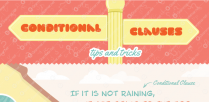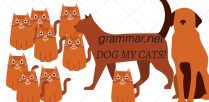Dashes, semicolons and colons are potent punctuation. They add clarity, call attention to sentence elements and improve the “flow,” but they also add drama and are destructive if over-used. The infographic will make learning the rules easier.
To download high resolution poster click here.
The Semicolon
Each of these tools acts as a speed bump in writing. After the comma, the semicolon is the least abrupt. It is used to join two closely-related sentences, creating a pause where a writer doesn’t want the full-stop of a period.
“I was cold. It was raining. I forgot my coat.”
The abruptness of the periods almost hurts. Add a semicolon and a comma, and it flows gently from idea to idea.
“I was cold; it was raining, and I forgot my coat.”
In lists, semi colons are necessary when commas separate the descriptive words. Notice how the second example is more organized and easier to follow.
“In the field were a tall, skinny, spotted horse, a small, fat, white horse, and a huge, black, angry bull.”
“In the field were a tall, skinny, spotted horse; a small, fat, white horse; and a huge, black, angry bull.”
The Colon
Colons pause the sentence even more. They are used to call attention and for explanations, they emphasize lists, they will highlight an introduction, they can set aside examples or quotes and they are used to join related sentences.
“She jumped when she heard the doorbell: Bill.”
“He was far too early: she was not ready.”
“There was still much left to do: brush her teeth, do her hair and apply her makeup.”
“She looked terrible: Godzilla on a bad day.”
“She clearly remembered her words on the phone: ‘Be here at 7:30.'”
“She wondered how the rest of the night would go: this was not a good start.”
Each example is valid, but notice how irritating it is to read them like a story. Multiple uses make the colon sound like a fun, universal tool, but be careful to use it sparingly, as too many can ruin writing like too much salt ruins food.
The Dash
Hyphens are for words: red-orange cat, one-way street, T-shirt, e-mail
Dashes punctuate sentences: “June–the start of summer–was cold this year.”
Dashes are rarely required in English grammar and a lot of people avoid them, but dashes do have uses. They create a powerful speed bump and can destroy the flow of writing if used too often. As in the example above, when dashes are used to add information, they call attention to whatever they frame; they also hint that this information is not crucial to understanding the sentence. People who shun dashes might say that the above example could just as easily use commas.
Dashes are used to show the interruption of thought or conversation.
“I was about to go to the–ooh, let’s go get ice cream!”
“Where’s my cheeseburger? I just put it on the–hey, whose dog is this!”
Dashes can also signal an introduction or a conclusion.
“Ketchup, mustard, pickles–I was ready for my cheeseburger.”
“I was prepared but had forgotten one crucial element–the cheeseburger, itself.”
It is argued that these forms of punctuation add unnecessary drama, and some folks avoid them completely. What is your opinion?



![Anyway vs. Anyways [infographic]](https://www.grammar.net/wp-content/uploads/2013/08/AnywayOrAnyways_web-308x95.jpg)
![Either… or/neither… nor and double negatives [infographic]](https://www.grammar.net/wp-content/uploads/2013/09/double_negatives_web-version-308x95.jpg)



